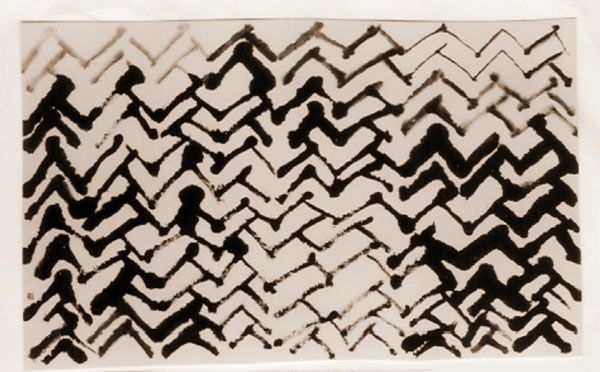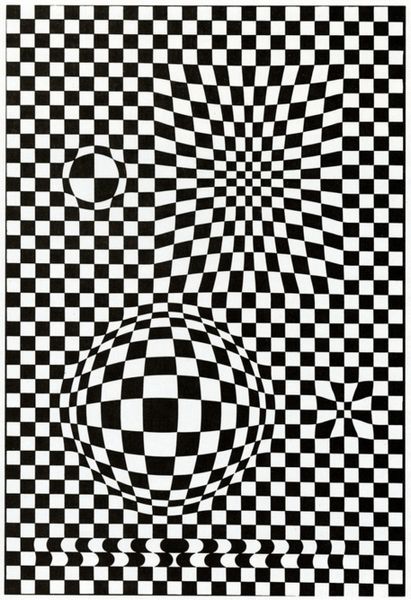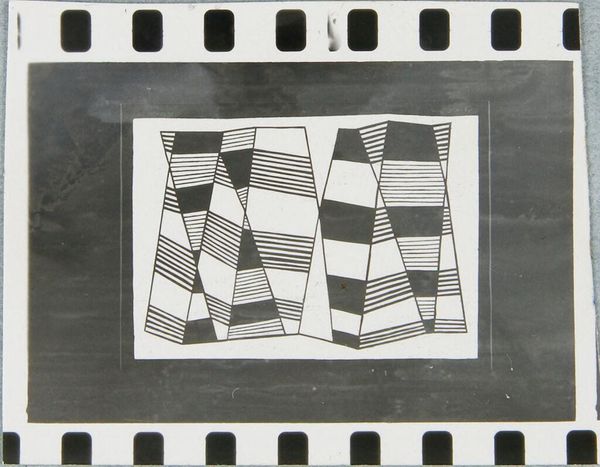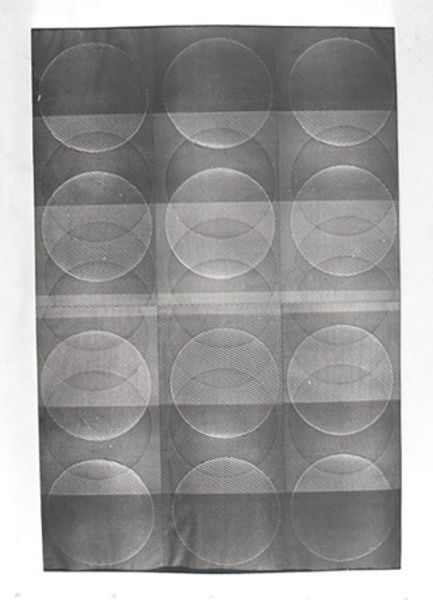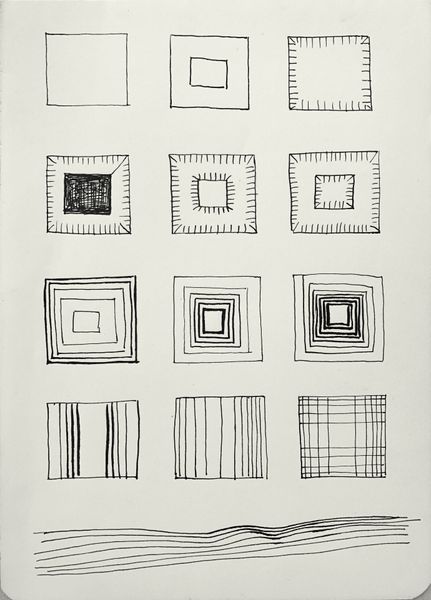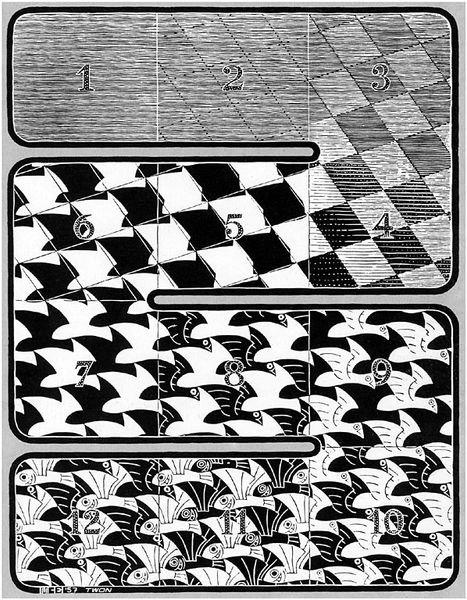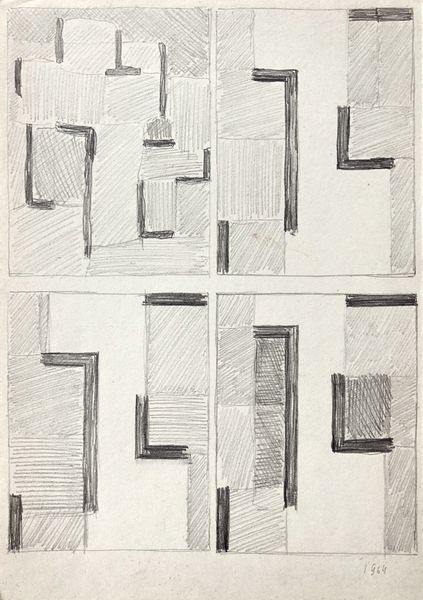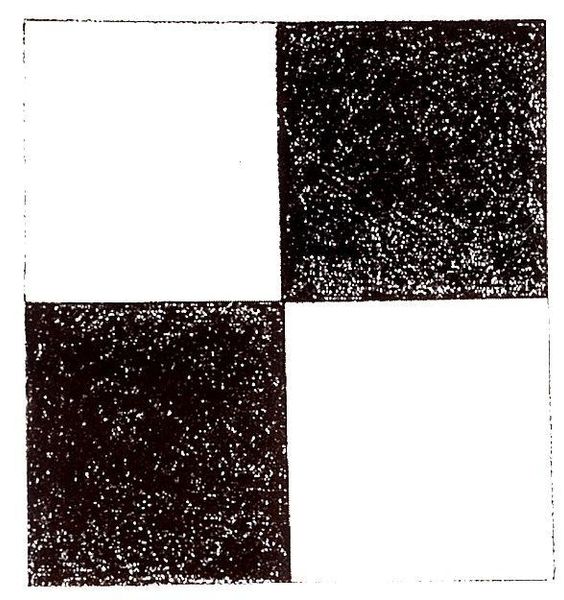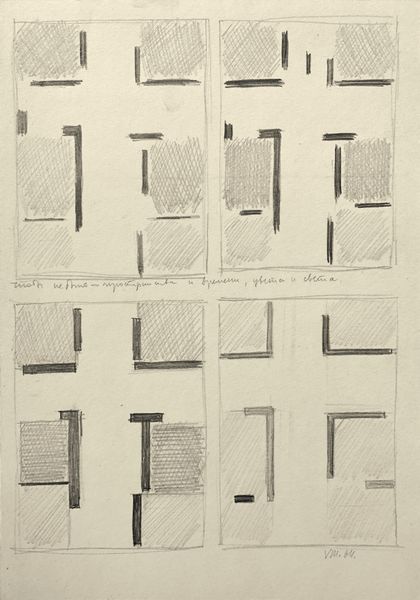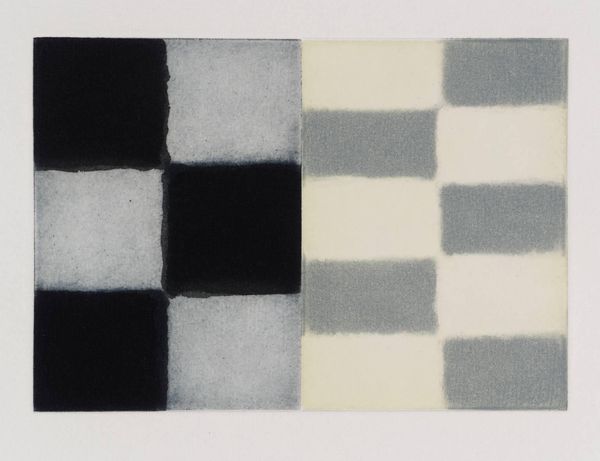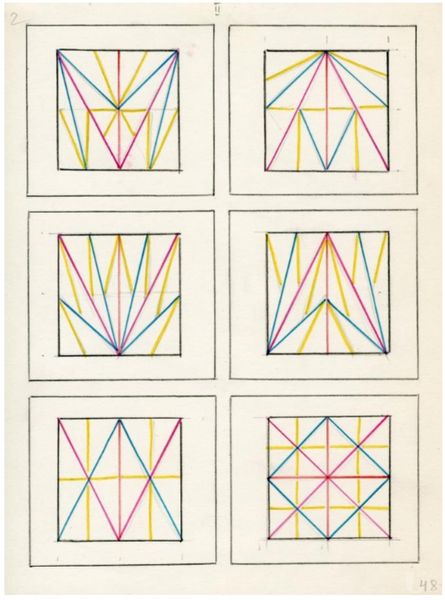
#
op-art
# print
#
pattern
#
pattern design
#
geometric
#
abstraction
#
line
#
monochrome
Copyright: M.C. Escher,Fair Use
Editor: This is "Metamorphosis III," a black and white print created by M.C. Escher in 1968. It’s such a long piece, and the way the images morph from one thing to another is really captivating. What do you see in this piece, from your perspective? Curator: Well, initially, I am drawn to the rigorous formal structure. Consider the visual logic: Escher masterfully manipulates tessellations, transforming shapes and figures through a sequence of carefully constructed phases. It demonstrates a command of line, pattern, and spatial relationships. What are your thoughts on his manipulation of geometric forms? Editor: I find it almost mathematical, how he transforms squares into lizards, then to honeycombs and so on. It's mesmerizing, but it also makes me wonder about meaning. Curator: Meaning arises precisely from this interplay. It is less about explicit symbolism and more about the process of transformation itself. The rigid geometry gives way to organic forms, only to return to abstraction, highlighting the fundamental relationship between order and chaos, representation and abstraction, in the visual realm. How do you interpret the beginning and the end? Editor: The word "Metamorphose" becomes a checkered pattern, and ends with a townscape which is then reintegrated to the word "Metamorphose". So, to me, it suggests the cyclical nature of transformation itself. The structured shapes return to their source, ready to morph once more. Curator: Precisely. By deconstructing and reconstructing forms, Escher invites us to consider the intrinsic properties of visual language itself and also questions our perception. The spatial arrangement creates tension and that contributes to the impact. Editor: It's like he's showing us the underlying code of reality. Curator: Indeed. It compels us to question our assumptions about the stability of forms, illustrating the constant flux of visual experience, making "Metamorphosis III" a testament to the dynamic power of structure. I will certainly keep thinking about this artwork. Editor: Absolutely! It's been a fascinating journey delving into Escher's visual mind and recognizing the visual language of forms in metamorphosis.
Comments
No comments
Be the first to comment and join the conversation on the ultimate creative platform.
